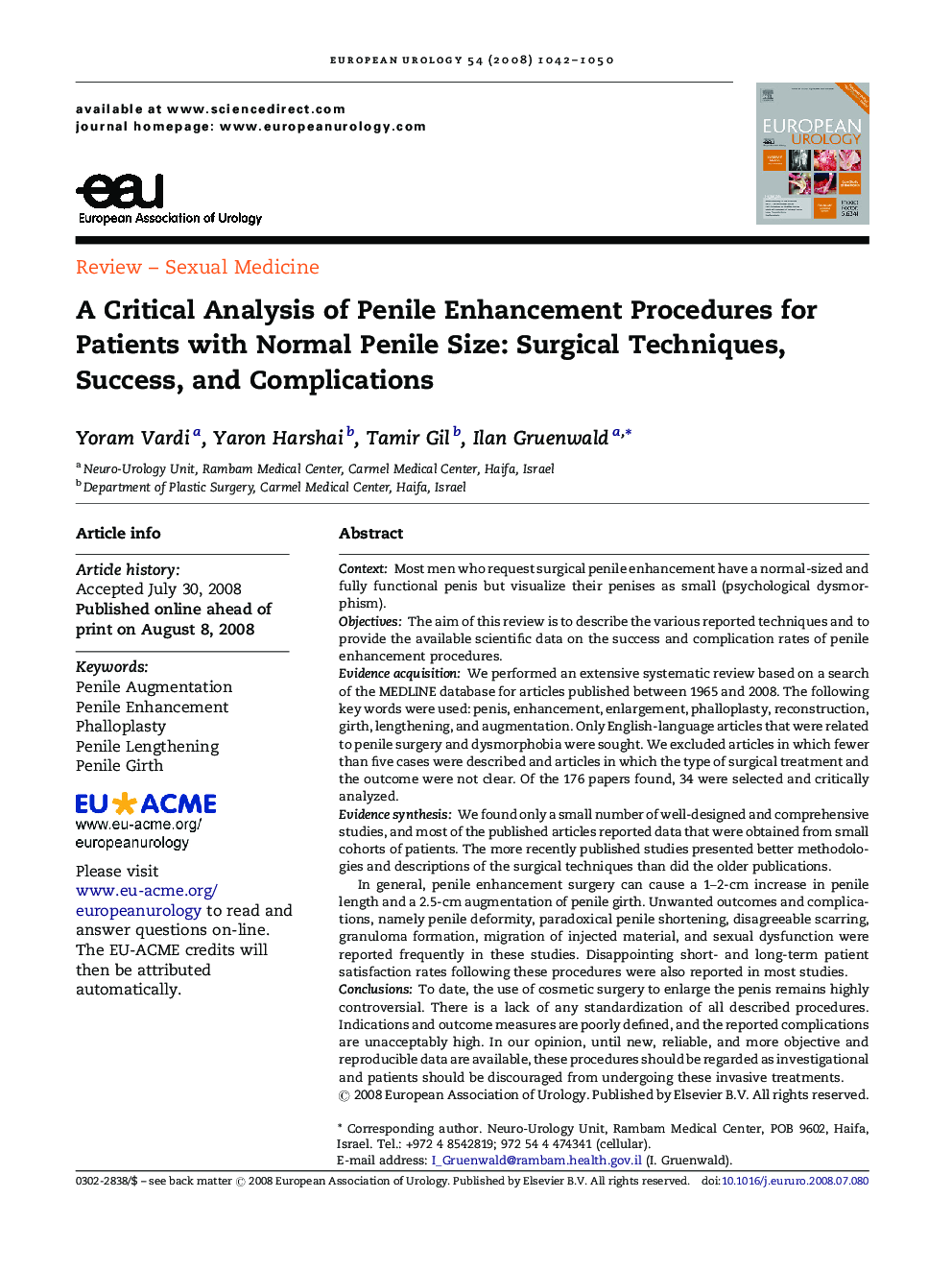| Article ID | Journal | Published Year | Pages | File Type |
|---|---|---|---|---|
| 3925631 | European Urology | 2008 | 9 Pages |
ContextMost men who request surgical penile enhancement have a normal-sized and fully functional penis but visualize their penises as small (psychological dysmorphism).ObjectivesThe aim of this review is to describe the various reported techniques and to provide the available scientific data on the success and complication rates of penile enhancement procedures.Evidence acquisitionWe performed an extensive systematic review based on a search of the MEDLINE database for articles published between 1965 and 2008. The following key words were used: penis, enhancement, enlargement, phalloplasty, reconstruction, girth, lengthening, and augmentation. Only English-language articles that were related to penile surgery and dysmorphobia were sought. We excluded articles in which fewer than five cases were described and articles in which the type of surgical treatment and the outcome were not clear. Of the 176 papers found, 34 were selected and critically analyzed.Evidence synthesisWe found only a small number of well-designed and comprehensive studies, and most of the published articles reported data that were obtained from small cohorts of patients. The more recently published studies presented better methodologies and descriptions of the surgical techniques than did the older publications.In general, penile enhancement surgery can cause a 1–2-cm increase in penile length and a 2.5-cm augmentation of penile girth. Unwanted outcomes and complications, namely penile deformity, paradoxical penile shortening, disagreeable scarring, granuloma formation, migration of injected material, and sexual dysfunction were reported frequently in these studies. Disappointing short- and long-term patient satisfaction rates following these procedures were also reported in most studies.ConclusionsTo date, the use of cosmetic surgery to enlarge the penis remains highly controversial. There is a lack of any standardization of all described procedures. Indications and outcome measures are poorly defined, and the reported complications are unacceptably high. In our opinion, until new, reliable, and more objective and reproducible data are available, these procedures should be regarded as investigational and patients should be discouraged from undergoing these invasive treatments.
